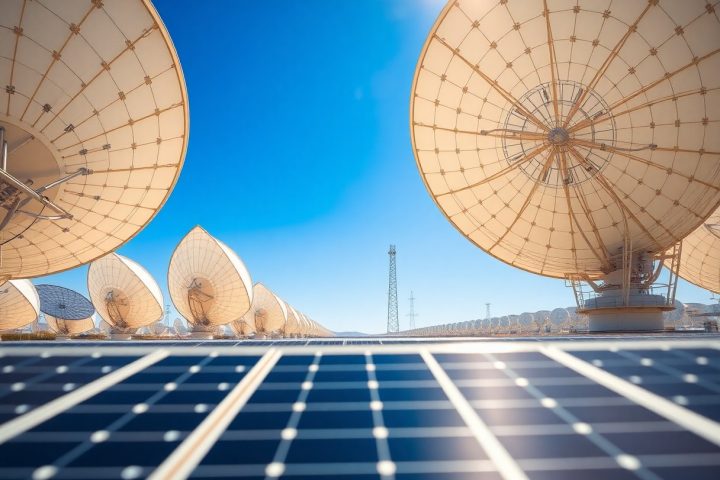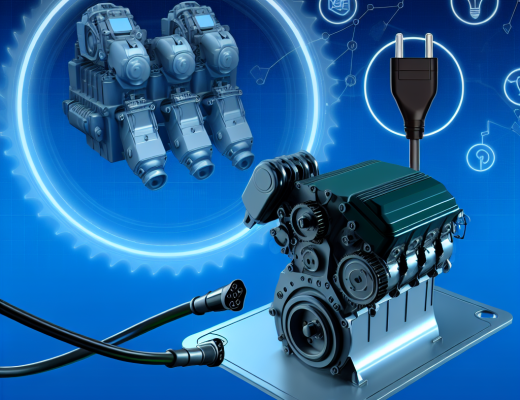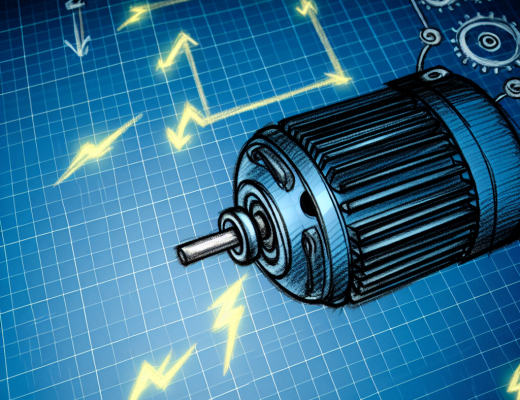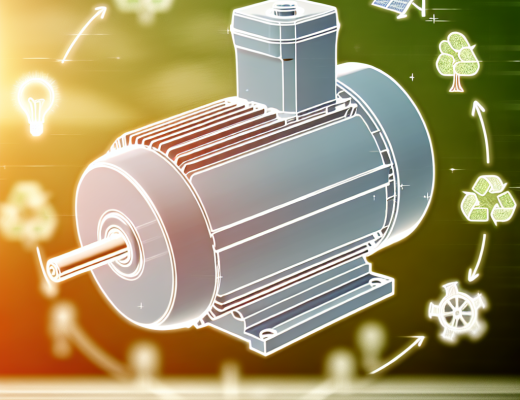Most energy-conscious individuals are increasingly looking toward renewable technologies to reduce their carbon footprint and enhance energy efficiency. Concentrated Solar Power (CSP) technology offers a sustainable solution by harnessing the sun’s energy to generate electricity on a larger scale than traditional solar panels. In this post, you’ll learn how CSP works, its various components, and the advantages it brings to your energy strategy, making it a compelling option for both commercial and residential applications. Understanding CSP can empower you to make informed decisions about your energy consumption and sustainability practices.
Overview of Concentrated Solar Power (CSP)
The use of Concentrated Solar Power (CSP) technology represents a significant advancement in renewable energy solutions, harnessing solar energy through innovative methods to generate electricity. By utilizing mirrors or lenses to concentrate sunlight onto a small area, CSP systems can efficiently convert solar energy into thermal energy, which is then used to produce electricity on a larger scale. This technology has gained popularity in large solar power plants, providing a sustainable and efficient means of energy production.
Definition and Principles of CSP
Along with various renewable energy technologies, Concentrated Solar Power (CSP) specifically focuses on converting solar radiation into thermal energy. The core principle behind CSP is to concentrate the sun’s rays using reflective surfaces, such as mirrors or lenses, that direct the sunlight onto a receiver. The receiver collects the concentrated energy, heating a fluid that can generate steam to drive a turbine and produce electricity.
Types of CSP Technologies
Against the backdrop of diverse energy generation methods, you can find several CSP technologies, each designed to optimize the conversion of solar energy. These technologies include:
- Parabolic Trough Systems
- Power Tower Systems
- Linear Fresnel Systems
- Dish Stirling Systems
The table below summarizes the key types of CSP systems:
| Type of CSP | Description |
|---|---|
| Parabolic Trough | Uses curved mirrors to focus sunlight onto a receiver tube. |
| Power Tower | Concentrates sunlight from a large field of mirrors onto a tall tower. |
| Linear Fresnel | Employs flat mirrors to concentrate sunlight on a receiver located above the mirrors. |
| Dish Stirling | Utilizes a parabolic dish to concentrate sunlight onto a receiver for a Stirling engine. |
| Hybrid Systems | Integrates CSP with traditional power plants to enhance efficiency. |
Another notable aspect is how each CSP technology brings specific advantages and challenges, allowing you to choose the most suitable option for your energy needs. These technologies can be further broken down into:
- Efficiency levels
- Land requirements
- Costs and investment returns
- Scalability
The table below provides more detail on these aspects:
| Aspect | Importance |
|---|---|
| Efficiency | Determines how much energy can be produced relative to sunlight received. |
| Land Requirements | Influences site selection and project feasibility. |
| Cost | Affects initial investment and long-term financial viability. |
| Scalability | Allows for adjustment based on energy demand. |
| Maintenance | Impacts overall operational efficiency and sustainability. |
How CSP Works
While Concentrated Solar Power (CSP) systems harness solar energy to generate electricity, they do so by using mirrors or lenses to focus sunlight onto a small area. This concentrated solar energy is then converted into heat, which can produce steam to drive turbines. Through this process, CSP technology captures and transforms solar radiation effectively, allowing you to leverage the sun’s power even when direct sunlight is intermittent.
Heat Collection and Conversion
Behind CSP technology lies a sophisticated system of mirrors or parabolic troughs that capture sunlight. The mirrors reflect and focus the sunlight onto a receiver, where a heat transfer fluid absorbs the concentrated heat. This fluid then heats water to produce steam, which drives a turbine connected to a generator, ultimately converting thermal energy into electrical energy that you can use.
Energy Storage Options
Beside electricity generation, CSP systems can integrate energy storage options to enhance reliability. By capturing excess heat generated during peak sunlight hours, you can store this energy for later use. This storage capability allows CSP plants to continue providing electricity even when the sun isn’t shining, offering you a consistent and dependable energy source.
With various energy storage solutions such as molten salt, thermal oil, or phase change materials, you can effectively manage energy output during non-sunny periods. Molten salt systems, for example, allow you to store heat for hours or even days, enabling the CSP facility to deliver power when demand is high, regardless of the weather. This flexibility makes CSP a compelling renewable energy option for sustainable energy needs.
Advantages of CSP Technology
Any energy solution needs to be effective, and Concentrated Solar Power (CSP) technology offers numerous advantages including renewable energy generation, reduced greenhouse gas emissions, and the capability for energy storage, making it a sustainable choice for the future. Its ability to provide power even when the sun isn’t shining further enhances its reliability, positioning CSP as an crucial player in the transition to a low-carbon economy.
Environmental Benefits
Technology plays a significant role in minimizing environmental impacts. CSP systems generate electricity without producing air pollutants or greenhouse gases during operation. This contributes to cleaner air and helps combat climate change, making CSP a valuable alternative to fossil fuels. Additionally, the land used for CSP plants can often be co-utilized for other purposes, promoting biodiversity and sustainable land management.
Economic Benefits
For your investment, CSP technology presents numerous economic advantages, including job creation, energy security, and reduced dependence on foreign energy sources. Harnessing local solar resources can lead to lower energy costs in the long term, as you will be less susceptible to fluctuations in fossil fuel prices.
For instance, numerous studies show that CSP plants create far more jobs per unit of energy produced than traditional fossil fuel plants. This job creation happens not only during the construction of CSP facilities but also in operations and maintenance. Furthermore, as these projects are often developed locally, they can stimulate the economy by providing a steady flow of income and job opportunities within the community.
Reliability and Scalability
The design of CSP systems enables high reliability and scalability, allowing you to adapt the technology to suit your energy needs. Unlike traditional solar photovoltaic systems, CSP can store thermal energy to provide electricity even when sunlight is not available, ensuring a consistent power supply.
Advantages of this scalability mean that you can start with a smaller CSP installation and gradually expand it as your energy demands increase. This feature is particularly beneficial for both residential and commercial applications, as it allows you to invest in a manageable system initially while keeping future growth options open, ultimately promoting long-term energy sustainability for your projects.
Challenges and Limitations of CSP
To fully harness the benefits of Concentrated Solar Power (CSP) technology, you must be aware of the challenges and limitations it faces. These include geographic and climatic constraints, high initial investment and maintenance costs, and the need for significant land area. Understanding these factors will help you evaluate CSP as a viable energy solution for your specific circumstances.
Geographic and Climatic Constraints
Among the various challenges presented by CSP technology, geographic and climatic constraints are important considerations. CSP plants ideally require high direct sunlight exposure, making them most effective in arid and semi-arid regions. If your location experiences frequent cloud cover or rainfall, the efficiency of CSP plants will diminish, which may limit its practicality in those areas.
Initial Investment and Maintenance Costs
Against the advantages of CSP, you will find that initial investment and maintenance costs can be substantial. Setting up a CSP facility involves high capital expenditure on equipment, land, and infrastructure. Furthermore, ongoing maintenance is necessary to ensure optimal efficiency, which can add to your long-term financial commitment.
It is important to consider that while CSP systems can offer low operational costs over time, the initial financial barrier can be daunting. You are likely to face challenges in securing funding, and this can limit your options for implementation. Furthermore, the technology requires skilled personnel for operation and maintenance, which can add to your overall expenses. Evaluating your budget and resources is important before committing to CSP as your renewable energy solution.
Case Studies of Successful CSP Projects
Unlike many renewable energy technologies, Concentrated Solar Power (CSP) has demonstrated significant success in various installations worldwide. Here are some notable case studies showcasing the effectiveness of CSP:
- Ivanpah Solar Electric Generating System (USA) – Produces 392 MW with a total investment of $2.2 billion.
- NOOR Solar Complex (Morocco) – Comprises three plants with a combined capacity of 580 MW, reducing CO2 emissions by 760,000 tons annually.
- Gemasolar Thermosolar Plant (Spain) – Features a 19.9 MW capacity with innovative molten salt storage allowing for 15 hours of energy supply after sunset.
- Solana Generating Station (USA) – Generates 280 MW and includes a thermal energy storage system with a capacity of 6 million gallons.
Notable CSP Installations Worldwide
Against the backdrop of global renewable energy efforts, several CSP installations stand out as exemplary models of innovation and efficiency, pushing the boundaries of solar technology and proving the viability of renewable energy on a large scale.
Lessons Learned from CSP Deployments
Beside celebrating their successes, CSP projects have also provided valuable insights into the challenges and opportunities inherent in deploying this technology. These experiences can inform your understanding of best practices in future projects.
But these lessons indicate that effectively managing operational issues, optimizing costs, and incorporating advanced technologies can significantly enhance the performance of CSP systems. Projects often highlight the importance of selecting suitable sites with high solar irradiance and ensuring that local policies support renewable energy growth. Additionally, stakeholder collaboration and community engagement prove pivotal in the successful implementation of CSP initiatives. By applying these lessons, you can improve the viability and longevity of future CSP deployments.
Future Trends in CSP Technology
Despite various challenges, the future of Concentrated Solar Power (CSP) technology is promising. Emerging innovations and strategic enhancements in CSP systems not only aim to reduce costs but also increase efficiency and functionality. As you explore these advancements, you’ll likely find that CSP plays a vital role in the transition to sustainable energy sources, fostering greater adoption in the coming years.
Innovations in Materials and Efficiency
At the forefront of CSP advancements are innovative materials and designs aimed at improving thermal efficiency and reducing thermal losses. These breakthroughs involve advanced solar collectors and heat transfer fluids that can operate at higher temperatures. As you consider these innovations, they represent a significant step toward increasing the competitiveness of CSP systems in the global renewable energy market.
Integration with Other Renewable Energy Sources
Future integration of CSP technology with other renewable energy sources will enhance overall system reliability and energy yield. By combining CSP with wind and photovoltaic systems, you can expect improved energy production, especially during peak demand periods. This hybrid approach allows solar power to be supplemented and balanced with other renewable resources, creating a more consistent energy supply.
Efficiency in energy generation increases when you integrate CSP with other renewable sources, allowing for smooth energy production fluctuations. Such integration not only harnesses varying energy outputs efficiently, but it also maximizes resource utilization. With the combination of CSP’s thermal energy storage and the instant availability of wind or solar PV, your energy systems can offer enhanced stability and reduced reliance on fossil fuels, making a compelling case for a diversified renewable energy mix.
Conclusion
Drawing together the insights on Concentrated Solar Power (CSP) technology, you can see that it offers a compelling solution for harnessing solar energy efficiently. By understanding how CSP systems work and recognizing their advantages, such as enhanced energy storage and reduced land use, you can appreciate their potential in addressing your energy needs sustainably. As the demand for clean energy rises, exploring CSP may guide you toward a more eco-friendly energy future.




